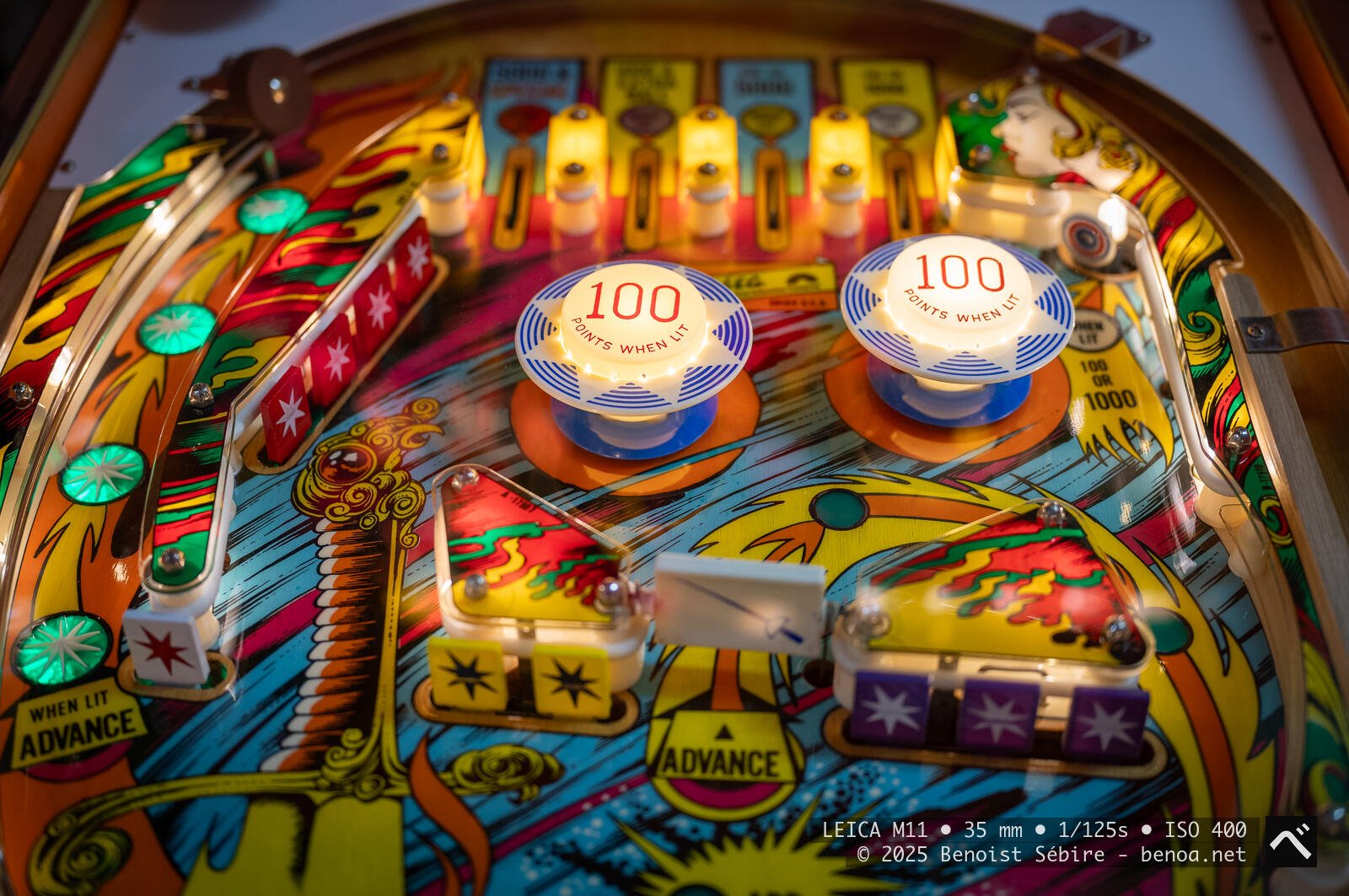100 Points

Old American pinball machines have a kind of gritty charm that mixes mechanical clatter with bright, unapologetic style. They’re loud—buzzers, bells, and the solid thunk of a steel ball smacking a bumper. Unlike today’s digital games, there’s nothing soft or polite about them. They’re all muscle: spring-loaded plungers, flashing lights, hand-painted artwork of cowboys, space heroes, or rock bands. The cabinets were made of heavy wood, not plastic, and you could feel the machine pushing back when you played. Every nudge mattered. Every tilt was a gamble. There’s nostalgia in how physical they are. No screens, no updates—just raw, analog fun that demanded skill and timing. Walk into an old American arcade or bar and hear one come to life, and you’re instantly pulled back to a time when games had real weight and rhythm. They weren’t just for playing. They were for competing. For bragging rights. For staying up late and feeding in one more quarter.
